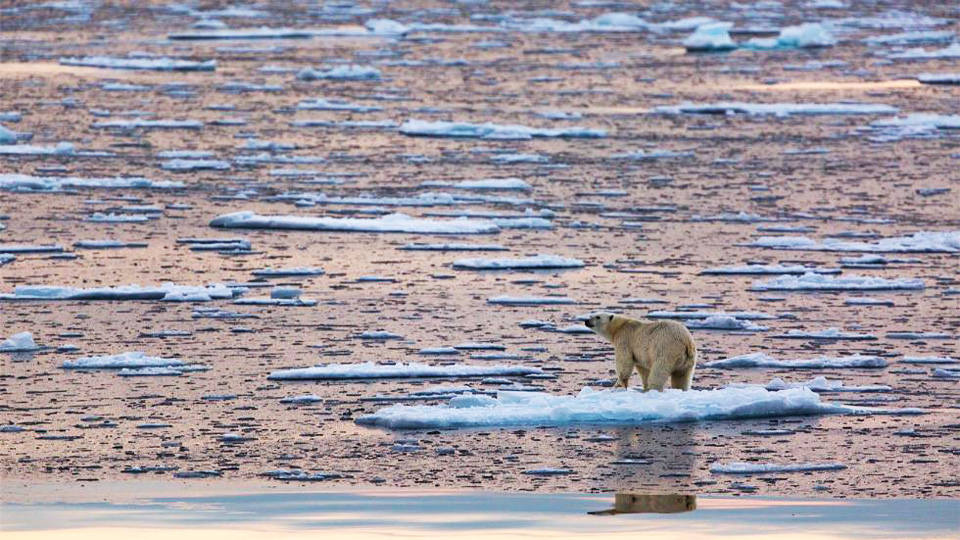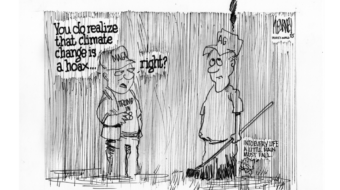
In the Arctic, two records have been broken – neither of them good. Though snowstorms may be battering the Northeastern U.S., climate change is manifesting in a different and more dangerous form at the bottom of the world.
As Antarctica’s sea ice continues to melt, new data shows that there is 10 percent less of it this year than the previous record minimum back in 2011. Specifically, the amount of sea ice around the southern continent has shrunk to 2.1091 million square kilometers, according to Jan Lieser, a sea ice scientist with the Antarctic Climate and Ecosystems Cooperative Research Centre.
This information came to light on the same day that the World Meteorological Organization announced a new record high temperature for Antarctica – 63.5 degrees. This record was set on March 24, 2015 at the Argentine Research Base Esperanza, which is near the northern tip of the Arctic peninsula. It took until March of this year for the organization to verify the temperature, but that data is only for the continent itself; the entire Antarctic region saw a skyrocketing record of 67.6 degrees. It’s no wonder, then, that in 2016 the average ice coverage around Antarctica shrank 1.2 million square kilometers.
Scientists now believe that Arctic sea ice could completely vanish in summers during this century, even if governments achieve the target set for limiting global warming under the 2015 Paris agreement. The current goal is to limit the rise in average world temperatures to below 2 degrees Celsius above pre-industrial times. However, “that target may be insufficient to prevent an ice-free Arctic,” James Screen and Daniel Williamson of Exeter University wrote in the Nature Climate Change journal. There would still be a 39 percent risk of ice disappearing during summertime, they said.
The shrinking ice is damaging the livelihoods of indigenous people and endangering wildlife, especially polar bears. The animals “are losing life-sustaining sea ice crucial for hunting, resting, and breeding,” according to the Guardian. A team of researchers with the European Geosciences Union added, “Their dependence on sea ice means that climate warming poses the single most important threat to polar bears’ persistence.” And with longer iceless periods, the bears must swim further than ever before to find solid ground. With no more than an estimated 25,000 of these mammals remaining, they are currently listed by the International Union for the Conservation of Nature as “vulnerable.”
Polar bears aren’t the only victims of the diminishing ice. Spring is arriving early for plant species in the lower Arctic of Greenland, while the emergence of others is being delayed. That has a ripple effect on wildlife; when spring plant growth outpaces the caribou calving season, fewer caribou calves are born and more of them die prematurely. That is currently happening.
Because of the changing climate, the Arctic landscape and ecosystem is changing rapidly, and that is unlikely to be a good thing.
“The Arctic is really dynamic, and it’s changing in a direction that won’t be recognizable as the same Arctic to those of us who have been working there for decades,” remarked Eric Post, a polar ecologist with the UC Davis Department of Wildlife, Fish, and Conservation Biology.
“The picture is definitely being reorganized. Think of it as going from something like a Picasso painting that blurs before your eyes and reorganizes into some kind of Dali landscape. You can see the pieces are still there, but the way they’re organized in relation to each other doesn’t look like what it used to be, and you wonder, ‘What am I looking at now, and what does that mean for how it all works together?’”
The dilemma currently affecting caribou is “one example of the consequences of this,” Post added. “We’re taking a step toward understanding how extensive and cryptic the effects of sea ice loss might be in the Arctic.”










